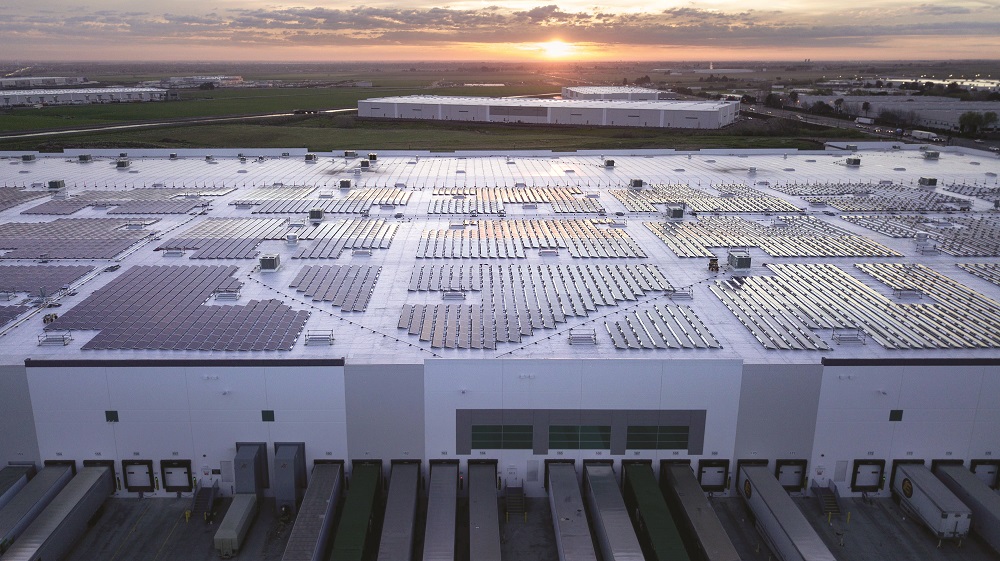More clients seek properties that meet high environmental goals

On a tight site in downtown Silver Spring, an elliptical, 130,000-square-foot office building made history last year.
United Therapeutics’ Unisphere, constructed by The Whiting-Turner Contracting Company, became the largest net zero commercial building created on the East Coast to date.
To achieve net zero, the project team adopted an extraordinary array of leading and ancient technologies. Those included a 1-megawatt solar system that integrated some PV panels into the building’s curtain wall; 52, 500-foot-deep geothermal wells drilled directly beneath the building’s foundation; and a high-performance, electrochromic envelope that both provides enhanced insulation and manages the building’s solar gain by altering glass tinting in response to the sun’s intensity. A seven- story atrium combined with automated window controls provides the office tower with a thermal chimney while “an earth labyrinth” (an ancient Roman technology) pre-conditions intake air by funneling it through a quarter-mile, underground, concrete maze.
Granted, Unisphere was a statement project, designed to encapsulate the owner’s sustainability goals and demonstrate that net zero energy could be achieved on an unconventional site. But Unisphere was also part of a trend.
As more employers add sustainability goals to their corporate culture and as campaigns to address climate change expand, the development community is increasingly expected to achieve higher LEED ratings, net zero energy status and other ambitious environmental goals. For example, during Climate Week in New York City in September, the World Green Building Council challenged the development community to “rethink the way we make buildings” and cut the “embodied carbon” in new construction 40 percent by 2030 and 100 percent by 2050.
Although net zero embodied carbon is still a long way from becoming an industry standard, green building standards that seeming like a stretch a few years ago are becoming increasingly common elements of development projects.
Gilbane Building Co., for example, has already completed or started construction of 1.1 million square feet of net zero projects with a construction value of nearly $650 million.
While most of those projects are government office buildings, schools or other institutional facilities, the green building goals of private sector clients have also noticeably increased, said Michael Ricketts, Senior Project Executive.
“Ten years ago, people talked about achieving LEED Silver. Now, they talk about Platinum or net zero,” Ricketts said.
To meet those client priorities, Gilbane has developed a practice of combing BIM models, virtual reality mockups and physical mockups to generate deep analysis of the energy performance and return on investment of project components. That practice, Ricketts said, has enabled Gilbane to exceed project expectations. A school project in Florida, for example, was able to move past its high-efficiency goals and achieve net zero status after physical mockups showed the design could out- perform the design’s BIM analysis.
In recent years, Prologis has dramatically increased the environmental objectives for its projects and properties. In 2018, Prologis ranked #3 for onsite solar energy adoption among American companies, surpassed only by Target and Walmart. It also became the first logistics real estate company with an approved Science Based Target (SBT) to reduce greenhouse gas emissions from its properties. By this past summer, Prologis had installed more than 201 megawatts of rooftop solar and secured sustainable building certifications on 139 million square feet of space worldwide. Those properties included a logistics facility in Germany for L’Oreal. Both the embedded footprint of the construction and the building’s ongoing operations are carbon neutral.
“High-quality, resilient design and construction; innovations in renewable energy and energy efficiency; reducing water use, waste and carbon emissions – all of these give us a competitive advantage in attracting and retaining customers,” said Danielle Schline, Vice President and Market Officer of Prologis.
Originally published in November/December 2019 NAIOP-MD InSites.